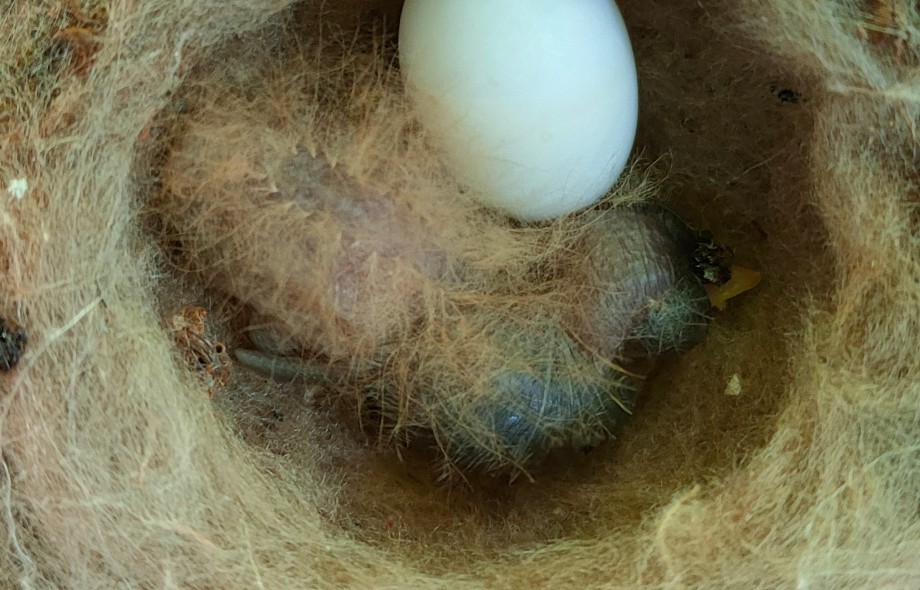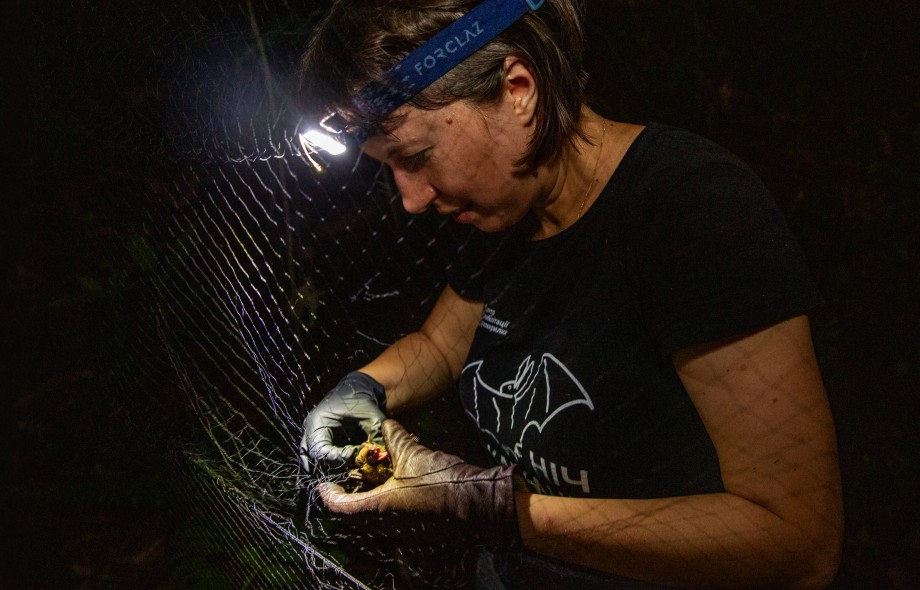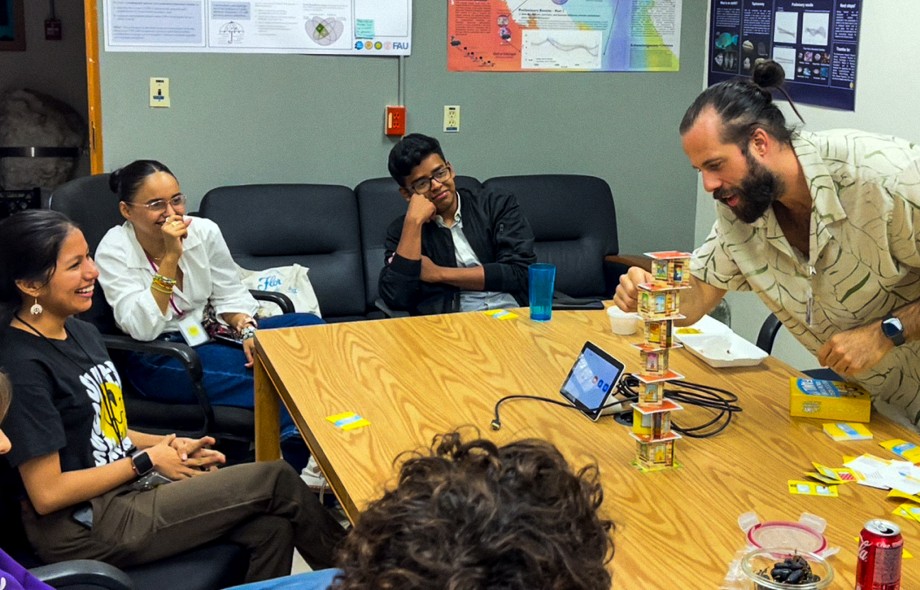A baby hummingbird hatches. But it has fluffy feathers on its back, looking just like a dangerous caterpillar. Could this be something unusual among hummingbirds?

You are here
Projects
& Stories
Gamboa
Spix’s disc-winged bats shrieked when they were first shown mealworms, a new food for them. Were they alarmed, or were they communicating their excitement to their fellow bats?
Over the last two years, staff at the Ukrainian Bat Rehabilitation Center have worked to save bats from the dangers of the Russian full-scale invasion. Now, they join researchers at the Smithsonian Tropical Research Institute to study bat behavior in Panama.
Frogs lay eggs both in the water and in jelly-like masses on plants. Could their flexible behavior help explain how vertebrates moved from life in ocean to life on land?
A new study from the Smithsonian Tropical Research Institute (STRI) shows that red-eyed treefrog embryos hatch early when exposed to high ammonia levels — an environmental cue that it’s too hot and dry for the eggs to survive.
Since 2023, a grassroots diversity and inclusion initiative has brought English and Spanish language learning to hundreds, fostering connection and feelings of belonging within the STRI community.





